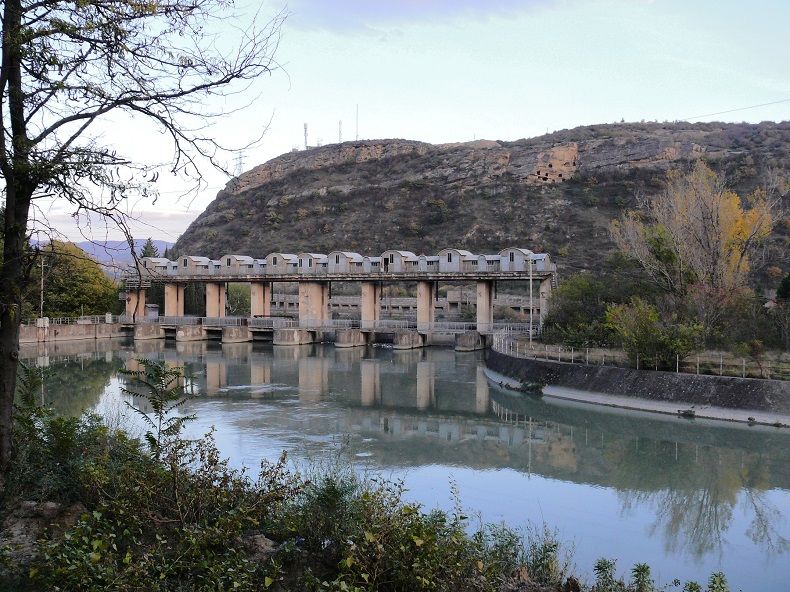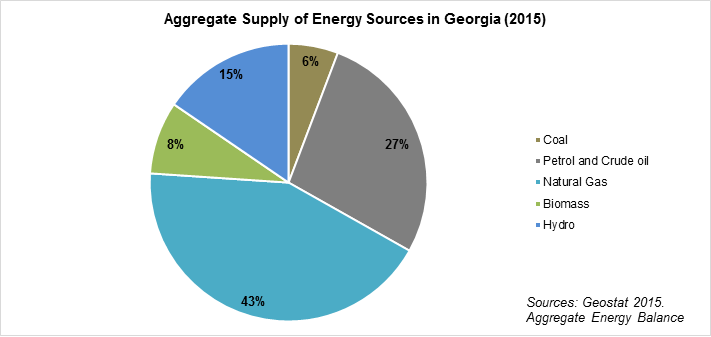Listening to discussions in professional circles and among policy makers, one can easily notice that the topic of energy security is often used as a reason to justify certain decisions, or point out the problems existing in the sector. Energy security is frequently associated with energy “independence” - a condition that only few countries in the world can claim to have achieved. This leads the public to understand energy security in a very narrow sense, associated with the share of energy produced within the borders of the country, and with the diversification of supply. In reality the concept is far wider, covering not only issues of self-sufficiency and/or diversification of supply, but also energy pricing and the environmental impacts of energy consumption. International organizations and economic literature provide different definitions for energy security. Larry Hagues (2011)1 summarizes those definitions, identifying three dimensions along which the energy security of a country should be assessed: (i) availability (supply), (ii) affordability (cost) and (iii) (environmental) acceptability. Understanding the concept of energy security properly is very important for the formulation of energy policies and decision making on energy issues.
For most household and industrial processes, different energy sources are usable interchangeably. So, to assess the level of energy security of a country it is important to: 1) consider energy sources as part of the country’s energy portfolio; 2) evaluate the impact of each energy source on each of the dimensions of energy security discussed above. Therefore, the first step to understanding how “energy secure” Georgia is would be to familiarize ourselves with the country’s energy mix:
AVAILABILITY
Natural Gas is clearly the most important source of energy for Georgia, representing more than 40% of all energy supplied. It is also the least diversified energy source. Roughly 99% of gas used in Georgia is imported from two sources: Azerbaijan and Russia. In coming years, Georgia is expected to be increasingly dependent on imports from Azerbaijan. As the Minister of Energy recently stated, imports from Russia are costlier, thus in the future the country might switch to 100% imports from Azerbaijan. Challenges and relative merits of this development are discussed in a previous blog.
Just as with natural gas, oil products such as petrol and diesel are also 100% imported. In this case, however, supplies are more diversified. Representing more than 27% of the country’s energy mix, oil products are imported from more than 6 countries (Romania, Bulgaria, Greece, Azerbaijan, Turkmenistan, and Kazakhstan), ensuring the supply portfolio is also diversified across different regions of the world (Europe and Central Asia). Furthermore, oil products are globally traded commodities; unless new (unexpected) constraints to imports emerge, access to new suppliers can be expected to remain fairly easy to achieve.
The most secure energy source from the point of view of availability is definitely electricity, considering that roughly 70-80% of its generation comes from local hydropower. The current (relatively low) share of hydropower in the Georgian energy mix (roughly 15% of total energy consumed) could be increased if a larger fraction of the hydro potential of the country was utilized (the recently published “Georgia’s Energy Sector Development Strategy 2016-2020” estimates that only around 20% of economically feasible hydropower potential is utilized). This is particularly promising, as electricity can substitute for most household and industrial demands for energy, enhancing reliability and security of supply.
AFFORDABILITY
Affordability is also a crucial dimension to consider when comparing different energy resources. Decisions of households and industries about what energy source to use for wide variety of purposes - from heating to producing electricity - finally boils down to their relative costs. Although different amounts of energy resources are needed for various applications, one can compare energy prices by converting sources in Tons of Oil Equivalent (TOE). Making this conversion for the highest retail prices2 for different resources shows that one TOE of electricity costs 2,498 GEL, one of natural gas costs 537 GEL, and one of petrol costs 2,546 GEL. Thus, from an affordability perspective, natural gas is the most secure source of energy, followed by electricity and oil products.
However, this analysis may be misleading. For one, relative costs also depend on the efficiency with which energy sources are used. For example, using gas to generate electricity equivalent to a TOE in a low efficiency thermal power plant (with estimated 35% efficiency) will not cost 537 GEL, but rather 1,534 GEL, reducing the relative advantage of natural gas versus electricity generated with hydropower. Another important point relates to the structure of the market. Subsidies, taxes and regulations can significantly affect the ranking. Therefore, rigorous research of cost and price formation process on energy markets is required to be able to compare relative prices and obtain a clear picture of energy security from the energy source affordability perspective.
ACCEPTABILITY
Environmental impacts associated with the consumption of energy resources can impose large costs on society. Non-irreversible local pollution and environmental degradation from energy resource use are relatively easier to address through direct compensation of those suffering from additional costs, or ensuring needed funding for mitigating harm. In case the impact is more global, or of irreversible nature, the situation is more complex both in terms of quantification of damages and of identification and compensation of the victims. Failure to have polluters compensating the victims amounts to subsidizing the most polluting resources. From these considerations should be clear that achieving a precise measure of these impacts (and of the environmental acceptability of alternative energy sources) requires conspicuous efforts to assess and monetize pollution impacts.
Looking at Georgia’s current energy mix, the most environmentally harmful energy source is definitely coal, due to largest CO2, sulfur dioxide and nitrogen oxide emissions. The biomass resource, whose importance might be underestimated by the energy balance, is traditionally a renewable source of clean energy. However, firewood consumption in rural areas poses a large threat to the environment, as its sustained consumption can lead to deforestation. Thus, in the case of Georgia, biomass cannot be considered as secure source of energy. Mainly used in transportation sector, fuel is an increasingly challenging environmental problem for the urban air quality of Georgia. Although emissions from natural gas are relatively smaller compared those of other fossil fuels, natural gas is still one of the major sources of pollution. This is due to large share of natural gas in total energy supply of the country. From an acceptability point of view, the most secure source is undoubtedly hydropower, with more localized environmental impacts, which can be mitigated over time.
WHAT HAVE WE LEARNED?
Even though, as we have mentioned, an appropriate analysis of energy security issues would require a much more thorough and complex analysis, we can draw some very important lessons from our relatively simple analysis. Developing electricity generation potential from hydropower definitely appears to be an energy security enhancing strategy for the country, according to all indicators. While in the short run the substitution of natural gas and oil products with electricity generated by hydropower is unlikely, recent technological trends – such as the increasing competitiveness of electric vehicles and the decreasing costs of storage capacity – indicate the substitution of less secure sources with hydropower might be soon increasingly feasible. Even the problem of the high relative price of electricity with respect to gas (which might be much less sharp if we consider the current expansion of gas networks and its expected impact on consumer tariffs), in fact can be attenuated by increasing the generation capacity of hydropower plants and by reducing the amount of electricity obtained through other sources (like gas-powered thermal power plants). Finally, an additional contribution to the phasing out of the least “secure” energy sources might also come from the increased utilization of other (renewable) energy sources. Overall, the future for Georgia’s energy secure looks relatively bright.
1 Hughes, Larry. 2011. "A generic framework for the description and analysis of energy security in an energy system." Energy Policy 221-231.
2 Highest retail prices for electricity - 0.21476 lari per kWh, Natural gas - 0.5004 lari per m3, petrol - 2.41 lari per liter. Conversion factors: 1 TOE – 11,630 kWh, 1 TOE – 1,074 m3 of natural gas, 1 m3 of petrol – 0.86 TOE (https://en.wikipedia.org/wiki/Tonne_of_oil_equivalent and http://www.convert-me.com/en/convert/energy/toe.html?u=toe&v=1)

















Comments
I have one question to the authors. What do you think about Khudoni HPP? Does Georgia need to build it to ensure energy security and will it satisfy these criteria?
Dear Maka, it is quite difficult to answer precisely to this question given the data to which we have currently access. In general we can say a few things. First, large dams definitely have stronger environmental impacts than smaller ones or than alternative renewable sources. There are also several other issues to consider. For example, on one hand, one can argue that Khudoni could work well with Enguri and improve the management of the water flow and the electricity generation. However, the opposite might also be true, if the incentives of the owners of the two dams did not coincide, and lead to a suboptimal situation. Another issue concerns the location of Khudoni (Western part of Georgia). We had an interesting workshop at ISET about the economic congestion of the Georgian electric network (with most of the demand in the Eastern part and most of the Generation in the Western part, which creates sometimes a situation in which the electric lines are not sufficient to allow Western supply to reach Eastern - mostly Tbilisi - demand). Because of this congestion, thermal power plants near Tbilisi (gas powered) sometimes have to be activated even if there would be potentially enough generation in the country to satisfy demand. In this case, dams in the East would be much more useful than Khudoni, as adding capacity to the West does not eliminate the bottleneck. Given the existence of the bottleneck, the most likely use of Khudonis electricity might be export, which would hardly help Georgian Energy security. Bottom line, if the goal is to reduce the cost of generation and to increase energy independence (for example gas imports) then Khudoni is not necessarily the best possible answer. So, it is not clear that Khudoni would contribute significantly to Georgian Energy Security, on any dimension.
Dear Norberto,
Thank you for your answer. It was very helpful.